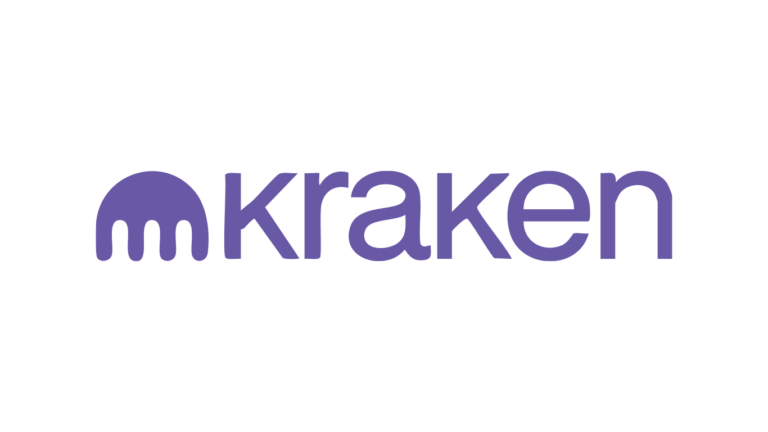Blockchain & Crypto
Payments, Capital Markets Tech & Tokenization
Exchanges
Wallets
Compliance - KYB, AML
On / Off-ramps
RWA Tokenization
Custodianship
Private, Permissioned Blockchains
Stablecoins, Utility Tokens

Kraken Completes Major Acquisition of Breakout to Offer Prop Trading to Clients Globally
Kraken, a technology platform built on crypto that unlocks access and reduces inefficiencies to drive financial freedom, has acquired Breakout.

Blockchain Unicorn Paxos Acquires Fordefi for Over $100 Million
Paxos, a blockchain infrastructure unicorn, is acquiring Israeli blockchain-security startup Fordefi for over $100 million, keeping its entire 50-person team

Adam T. Hark
Managing Member
Blockchain & Crypto Expert
- Blockchain & Crypto
- Stablecoins
The future is now.
The decentralization of financial services is no longer theoretical. It’s happening now. Real-world payments and banking applications, leveraging distributed, replicable database technology, i.e., blockchain, are being developed and deployed throughout the financial ecosystem. This is in addition to blockchain’s application to gaming, logistics, healthcare, and statement of record (SOR) use cases.
In payments, the disintermediation of financial institutions, correspondent banking networks, and debit and credit card schemes, imply a compelling use case for blockchain and cryptographic tokenization, which offer greater security and execution speed than legacy infrastructures, at a lower cost. These technologies also offer greater access to financial services for the unbanked and underbanked. This is why usage has accelerated in regions with immature and unsophisticated financial infrastructure, as well as regions where untrustworthy governance presides over the existing banking and financial systems.
Where blockchain and tokenization are still lacking (with particular regard to payments), is in transactional throughput. These nascent systems can’t process large amounts of payments transactions fast enough. But they are evolving quickly and newer technologies are already emerging, such as Layer 2. The price volatility of the native tokens of the largest public blockchain protocols – Ethereum and Bitcoin – are also a drag on adoption, though stablecoins (like Circle’s USDC) and utility tokens (like Ripple’s XRP) are addressing this issue, especially in the high demand use cases of cross border, B2B payments, payouts, and remittances.
In the capital markets space, the creation of self-executing contracts (smart contracts) and the evolution of decentralized applications (dApps) portend a wholesale disruption of existing technologies. Whether using private, permission-based blockchains or account abstraction, the ability to streamline trade execution and offer 24/7 programmable settlement with blockchain technology is a game changer.
There’s also the tokenization of real world assets (RWA), from health records and titles and deeds, to commercial bank money, wholesale bank money, U.S. Treasuries and investment-grade debt. The tokenization of the latter is being explored today between the Fed, commercial banks, and card schemes (Mastercard) in the context of a Regulated Settlement Network (a shared ledger) – current modalities settle across three distinct rails. Tokenization and the ability to settle and memorialize transactions on blockchain is a major advance in efficiency, security, and convenience.
Are blockchain startups too early in the tech cycle to be banked?
Not at all.
Even though the first cohorts of blockchain/crypto infrastructure companies are still in their infancy, they are getting serious attention from early-stage venture funds, strategics, and angels. And, despite the crypto-industry fiascos of late 2022 and early 2023 (FTX, Silvergate Bank, Signature Bank), LPs are no longer spooked by the sector. These events had the salutary effect of washing out the wildly speculative ICO schemes, fraudulent operations, and fraudulent operators, leaving a legitimate grouping of winners in their wake. These winners, mostly builders of blockchain and web3 infrastructure firms, are thriving, and it won’t be too long before they sufficiently scale into the area of the market where growth equity funds will engage.
The takeaway.
Investors are putting capital to work in this nascent sector, with a focus on allocating to the startups building the infrastructure for this transformational new way of conducting commerce and finance. In payments and capital markets technology, gateways, wallets, custodians, exchanges, on/off-ramps, payment processors, stablecoin issuers, compliance and risk monitors, specialty KYB, KYC, and AML providers, are all contributing to accelerated adoption, with increasing market demand pulling them forward.
Blockchain technology and encrypted digital asset value transfer sit at the leading edge of fintech, payments, and markets’ technology. Though highly speculative just a few years ago, these assets are now marketable and investable.
Wellesley Hills is bullish about this breakthrough technology, its applications, and its adoption, and we are optimistic about the opportunities it will create for our financial sponsor, strategic, and startup clients.
New Payment Modality, New Currency
Financial disruption incarnate.
For many fintech professionals, including fintech investment bankers, the speed of stablecoin adoption has been nothing short of breathtaking. Its first and most obvious use case continues to be cross-border payments, as the blockchain-based digital asset provides for an objectively better solution than the existing SWIFT network and the correspondent banking system. But this is just the start of a new age of payment and value transfer. The speed, security, and information rich transactional data stablecoins offer is attracting a lot of attention for B2C payouts, B2B domestic payments, and even C2B use cases as BIG Retail explores its implementation as a way to save billions of dollars (literally) by avoiding card network fees and issuing bank interchange.
From a fintech analyst’s perspective, it may be the most disruptive technology seen in payments and in decades. From a fintech investment banker’s perspective, it’s a new modality that, depending on a company’s core product/service offering, may be a “must have” functionality informing short and long-term value creation.
What are stablecoins?
Stablecoins are a category of cryptocurrency designed to maintain a steady value. Unlike highly volatile cryptocurrencies like Bitcoin (not a quality store of value), stablecoins are pegged to a stable asset, commonly a fiat currency like the USD or EURO, short-term treasuries, or a highly liquid commodity such as gold. The price stability captured by the pegging gives this particular digital asset an extremely compelling use case for payments as it in essence represents a tokenized “digital dollar” with the functional benefit of being informationally rich and not having to be conveyed on the world’s outdated financial rails: as a blockchain native token it’s simply a credit or debit entry between wallets on a distributed ledger.
Types of stablecoins.
There are four main types of stablecoins, each using a different method to maintain value:
- Fiat collateralized: Backed 1:1 by reserves of traditional currencies held in regulated bank accounts.
- Commodity backed: Pegged to physical assets like gold or oil.
- Crypto collateralized: Secured by other crypto currencies, often over collateralized to account for volatility.
- Algorithmic: Use smart contracts and supply demand mechanisms rather than physical reserves.
Fiat backed stablecoins in practice.
The most common type of stablecoin being used in current applications is that backed by fiat and/or short term treasuries. For all intents and purposes it’s a digital dollar that bridges the gap between traditional money and crypto. Each stablecoin token is tied to an equivalent unit of fiat currency or a liquid asset in a regulated, auditable reserve account maintained by the stablecoin issuer like Circle and Tether. Independent audits and regulatory oversight help ensure transparency, so that one stablecoin is always redeemable for one dollar (or its equivalent).
Regulation and oversight.
As stablecoins grow in popularity, governments and regulators worldwide are developing frameworks to ensure their safety, transparency, and integration with the broader financial system. The balance between innovation and oversight will be key in shaping how stablecoins are used in the future.
In the United States, the GENIUS Act of 2025 provides a regulatory framework for stablecoins, requiring issuers to maintain 1:1 reserves, submit to regular audits and comply with consumer protection standards. This legislation represents a significant step toward integrating stablecoins into the broader financial system while reducing risks for both businesses and consumers.
